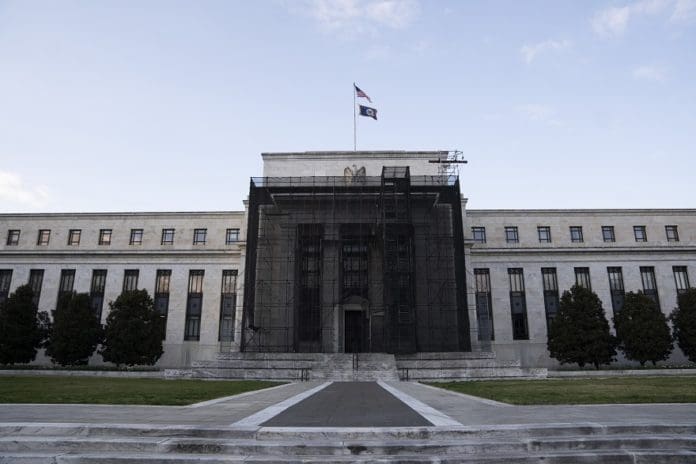
The United States Federal Reserve has likely completed its rate cuts for 2025, and investors should prepare for elevated inflation coupled with deteriorating jobs data, conditions pointing to early stagflation, according to Nigel Green, CEO of deVere Group, one of the world’s largest independent financial advisory organizations.
The Federal Open Market Committee voted 10 to 2 Wednesday to reduce its benchmark rate by 25 basis points to a range of 3.75 percent to 4.00 percent, while confirming that quantitative tightening will end on December 1. This marks the second consecutive rate cut following September’s reduction.
The decision revealed sharp divisions within the Fed. Governor Stephen Miran, appointed by President Donald Trump, argued for a deeper 50 basis point cut, while Kansas City Fed President Jeffrey Schmid opposed any cut at all. This split contrasts sharply with earlier coordinated policy moves and signals growing uncertainty at the heart of US monetary policy.
Green says the Fed’s fractured consensus means policy will move in smaller, slower steps, if at all. He believes investors expecting another reduction this year should rethink those assumptions, arguing that the combination of falling job creation and persistent inflation leaves the US economy exposed to stagnant growth with rising prices.
“The labor market is softening while inflation refuses to retreat as much as had been hoped,” Green stated in his analysis released Wednesday. “This is the textbook definition of stagflation risk. It’s not a crisis yet, but the warning signs are flashing.”
Fed Chair Jerome Powell rattled markets when he threw doubt on whether another reduction is coming in December, stating that a further rate reduction is “not a foregone conclusion”. Powell acknowledged strongly differing views within the committee about how to proceed, suggesting policy uncertainty will persist.
The government shutdown has complicated the Fed’s task by freezing release of key indicators such as payrolls, retail sales, and inflation updates. The lack of official data has forced the Fed to rely on partial indicators and market measures instead of comprehensive government reports. When policymakers lose sight of data, they lose confidence in their next steps, according to Green.
Economic data shows a slowdown in the labor market in recent months as businesses grapple with changes in trade and immigration, while inflation has trended higher as tariff related price hikes filter into government data. Major corporations including Amazon have announced significant job cuts, with Amazon planning to eliminate 14,000 corporate positions.
Green says ending quantitative tightening reveals that the Fed’s immediate priority is financial stability rather than stimulus. Halting the balance sheet reduction represents a liquidity decision aimed at steadying the system as funding markets tighten and reserves fall, not an effort to accelerate economic growth.
The Fed expanded its holdings during the Covid crisis, pushing the balance sheet from just over $4 trillion to close to $9 trillion. Powell has said that while the Fed found it necessary to shrink its holdings, he did not foresee a return to pre pandemic levels. Some analysts suggest the Fed might actually restart purchases early in 2026 for organic growth purposes as market conditions shift.
Green expects the implications to extend well beyond the United States. The Fed’s balance sheet defines dollar liquidity worldwide, and when it stops shrinking that balance sheet, capital flows adjust everywhere. Other central banks will follow the tone, if not necessarily the action, as they weigh their own inflation risks.
Markets recently had begun anticipating that the Fed would end quantitative tightening either in October or by the end of the year. However, the Fed’s cautious approach to future rate cuts caught many investors off guard, with traders lowering odds for a December cut from 90 percent to 67 percent following Powell’s comments.
The combination of persistent inflation and weakening employment creates what economists call a dual mandate dilemma. The Federal Open Market Committee noted in its announcement that there are risks to both sides of its dual mandate as job gains have slowed this year, with unemployment edging higher but remaining relatively low, while inflation has increased and remains elevated.
The Fed rarely eases monetary policy during economic expansions and bull markets in stocks. Major averages, though volatile, have been posting a series of record highs, boosted by further gains in Big Tech stocks and a robust earnings season. This creates additional complexity for policymakers weighing whether rate cuts remain necessary.
Green believes the rest of 2025 will be defined not by optimism about rate cuts but by recognition of how constrained the Fed has become. He concludes that investors need to plan for a reality where there are no more cuts this year, inflation stays elevated, and jobs weaken further.
The Fed has lost the comfort of consensus and faces two problems simultaneously: higher prices and slowing employment. This represents how stagflation begins, and market participants should position accordingly for a more volatile policy environment where data is incomplete and policy signals contradict each other.
For Ghana and other emerging markets, these US monetary policy shifts carry significant implications. Dollar liquidity conditions affect capital flows to developing economies, influencing exchange rates, inflation pressures, and borrowing costs. When the Fed becomes more cautious about easing, it typically strengthens the dollar and tightens financial conditions globally.
deVere Group, founded by Green in 2002, operates in more than 100 countries worldwide with over 80,000 clients and approximately $10 billion under advice and management. The firm provides independent financial advisory services to expatriates, international investors, and high net worth individuals on matters including international savings, pensions, life insurance, and structured products.
Source: newsghana.com.gh










